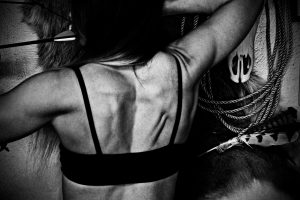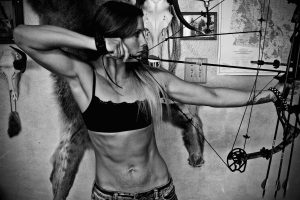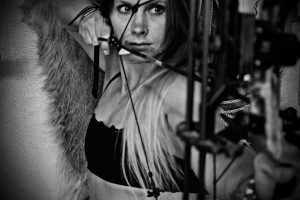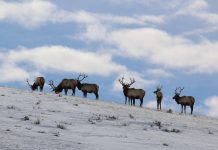If enough time is spent in the woods with bow in hand and game on the mind, the hunter will inevitably find himself or herself in a less than desirable position. Whether it be having to hold their bow fully drawn for an exceptionally long time or shooting in an awkward and unpracticed position. Nature is unscripted and practice as we may, we will never be able to duplicate the complicated and unimaginable scenarios that she will lead us into.
Preparation comes in many forms and one can argue that the best way to prepare is to simply shoot your bow. I agree with this sentiment and would advocate for as much practice as possible. Many hunters find themselves living in a situation that does not provide the space for a nightly archery session or they desire to rapidly increase their draw weight. For these folks, I offer this in-depth article on the upper body muscles involved in the art of shooting a bow and how to fully utilize and strengthen these muscles for maximizing your strength and ability for archery.
Upper Body
Everyone understands that the upper body is used to shoot a bow. One arm pulls while the other arm pushes and stabilizes. Each part is equally important and requires a lot of different muscles to pull it off. The main muscles used by the upper body during a shot are the levator scapulae, latissimus dorsi, trapezius, deltoids and rhomboids and to a lesser extent the triceps and biceps. It is also essential to consider and take special care of the muscles that make up the rotator cuff. We are going to look at the main purpose of each muscle and how you can strengthen and stabilize it for optimum performance.
Levator Scapulae

An exercise used to strengthen the rhomboids, levator scapulae, and the trapezius is a row. You can perform a row using dumbbells or tubing. Another way to learn how to properly use your muscles to create back tension is to place a tennis ball between your shoulder blades and hold it there using only the muscles in your back. This will provide muscle memory to help you properly engage your back during a shot and give you the opportunity to build stamina for long holds.
Deltoid

Latissimus Dorsi
The latissimus dorsi or “lats” also play a large role in the process of shooting your bow. They are a large muscle group spanning much of your back. Their role is to aid in the drawing back of the string and stabilization of the bow. When performed properly, pull-ups, negatives, and lat pulldowns can all help to strengthen the latissimus dorsi.
Triceps
The triceps are the located on the back of your upper arm and they are responsible for straightening the elbow, which is necessary when drawing the bow. The triceps can be strengthened by performing exercises such as triceps extensions and skull crushers.
While the triceps is straightening the elbow on the bow arm the bicep is helping to draw the string back on the opposing arm. The bicep is strengthened with curl exercises using machines, dumbbells, kettlebells or barbells.
Rotator Cuff

Home Exercise Routine
A basic home exercise routine to help strengthen and stabilize the archer’s upper body muscles should include rows, shoulder raises, pull-ups or negatives, triceps extensions, and curls and the four basic rotator cuff exercises. I have included a sample workout that covers all the basics and gives an idea of where to start. Use as much weight for the upper body exercises as you can for 5-6 reps. Proper form is more important than weight and will also play a key role in preventing injury.
For the rotator cuff exercises it is important to keep the weight lower and the reps higher. This is more of a stamina style workout and will protect the rotator cuff from injury. The right hand has a different role than the left but is still important to work all muscles equally. This will prevent muscle imbalances that can cause compounding problems down the road.
Upper Body Archery Workout:
(5-6 reps/3 sets) 2-3 non-consecutive days a week
Rows
Shoulder Raises
Pull-ups/Negatives
Triceps Extensions
Curls
Rotator Cuff Exercises:
(12-15 reps 1 set) 1-2 days a week
Rotation 1
Rotation 2
Scaption
Face Pull














